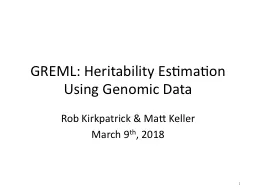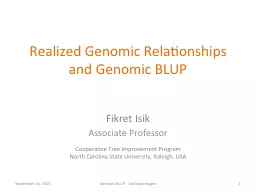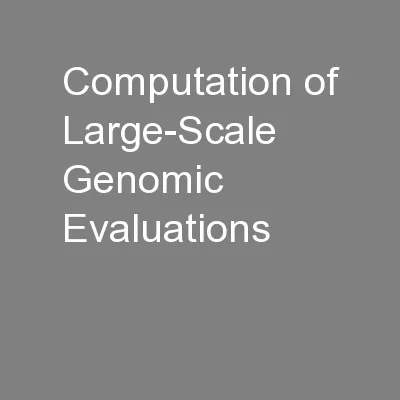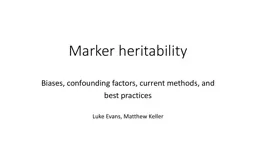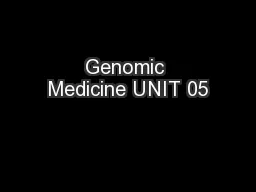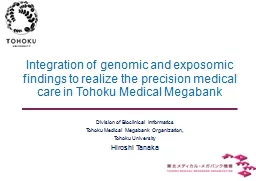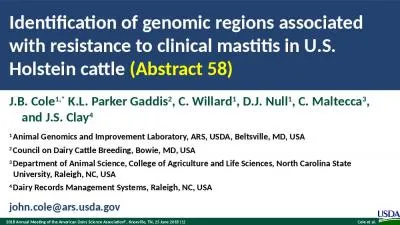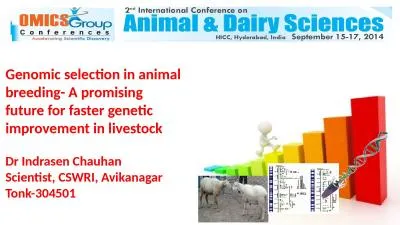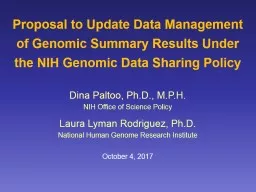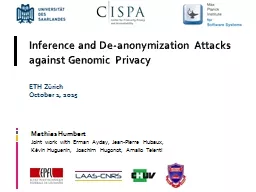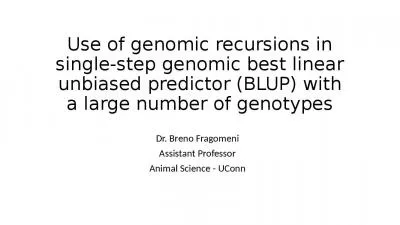PPT-GREML: Heritability Estimation Using Genomic Data
Author : pamella-moone | Published Date : 2019-11-21
GREML Heritability Estimation Using Genomic Data Rob Kirkpatrick amp Matt Keller March 9 th 2018 1 Overview Regression Estimates of V A Genomic Relatedness Matrices
Presentation Embed Code
Download Presentation
Download Presentation The PPT/PDF document "GREML: Heritability Estimation Using Gen..." is the property of its rightful owner. Permission is granted to download and print the materials on this website for personal, non-commercial use only, and to display it on your personal computer provided you do not modify the materials and that you retain all copyright notices contained in the materials. By downloading content from our website, you accept the terms of this agreement.
GREML: Heritability Estimation Using Genomic Data: Transcript
GREML Heritability Estimation Using Genomic Data Rob Kirkpatrick amp Matt Keller March 9 th 2018 1 Overview Regression Estimates of V A Genomic Relatedness Matrices GREML Combining GREML amp SEM. gutmannhelsinki Dept of Mathematics Statistics Dept of Computer Science and HIIT University of Helsinki aapohyvarinenhelsinki Abstract We present a new estimation principle for parameterized statistical models The idea is to perform nonlinear logist Fikret Isik. Associate . Professor. September 16, 2013. Genomic BLUP - UofCopenhagen. 1. Cooperative Tree Improvement Program. North Carolina State University, Raleigh, . USA. Outline. Background. Realized genomic relationships. livestock. Dr Indrasen Chauhan. Scientist, CSWRI, Avikanagar. Tonk-304501. – . B. ased . on individual records, pedigree or progeny performance or family performance. . SI=WT9 +1DMY90. Conventional selection . Early genomic theory. Nejati-Javaremi. et al (. 1997. ) tested use of genomic relationship matrix in BLUP. Meuwissen et al (. 2001. ) tested linear and nonlinear estimation of . haplotype. effects. Biases, confounding factors, current methods, and best practices. Luke Evans, Matthew Keller. Background – What Matt Keller presented. GREML-SC: single genetic relatedness matrix (GRM) to estimate heritability (. Genomic Medicine. In announcing on June 26, 2000, that the first draft of the human genome had been achieved, President Clinton said it would “revolutionize the diagnosis, prevention and treatment of most, if not all, human diseases.”. exposomic. findings to realize the precision medical care in Tohoku Medical Megabank. 0. Division of . Bioclinical. . Imformatics. Tohoku Medical Megabank Organization, . Tohoku University. Hiroshi Tanaka, . ForewordOne secret weapon has helped beat every disease outbreak over the last century but it is not masks or social distancing lockdowns or even vaccines Instead it is data Data tells us which masks (Abstract 58). J.B. Cole. 1,*. K.L. Parker Gaddis. 2. , C. Willard. 1. , D.J. Null. 1. , C. Maltecca. 3. , and J.S. Clay. 4. 1 . Animal Genomics and Improvement Laboratory, ARS, USDA, Beltsville, MD, USA. livestock. Dr Indrasen Chauhan. Scientist, CSWRI, Avikanagar. Tonk-304501. – . B. ased . on individual records, pedigree or progeny performance or family performance. . SI=WT9 +1DMY90. Conventional selection . George Wiggans, CDCB Technical Advisor. Highlights of U.S. system. Over half a million animals genotyped in 2016. 67% of AI breedings to genomic bulls. Genomic relationship between genotyped cows and marketed bulls available. Dina Paltoo, Ph.D., M.P.H.. NIH Office of Science Policy. Laura Lyman Rodriguez, Ph.D.. National Human Genome Research Institute. October 4, 2017. Housekeeping. Participants must register to join the webinar. ETH Zürich. October 1, 2015. Mathias Humbert . Joint . work. with Erman Ayday, Jean-Pierre Hubaux, . Kévin Huguenin, Joachim Hugonot, Amalio Telenti. (. Human. ) System Security. 0. 1. 0. 0. 1. 1. Dr. Breno Fragomeni. Assistant Professor. Animal Science - UConn. Where are the labels?. Introduction . Why genomic prediction?. Higher accuracy. Shorter generation interval . Higher genetic gain. Genetic gain per year.
Download Document
Here is the link to download the presentation.
"GREML: Heritability Estimation Using Genomic Data"The content belongs to its owner. You may download and print it for personal use, without modification, and keep all copyright notices. By downloading, you agree to these terms.
Related Documents

